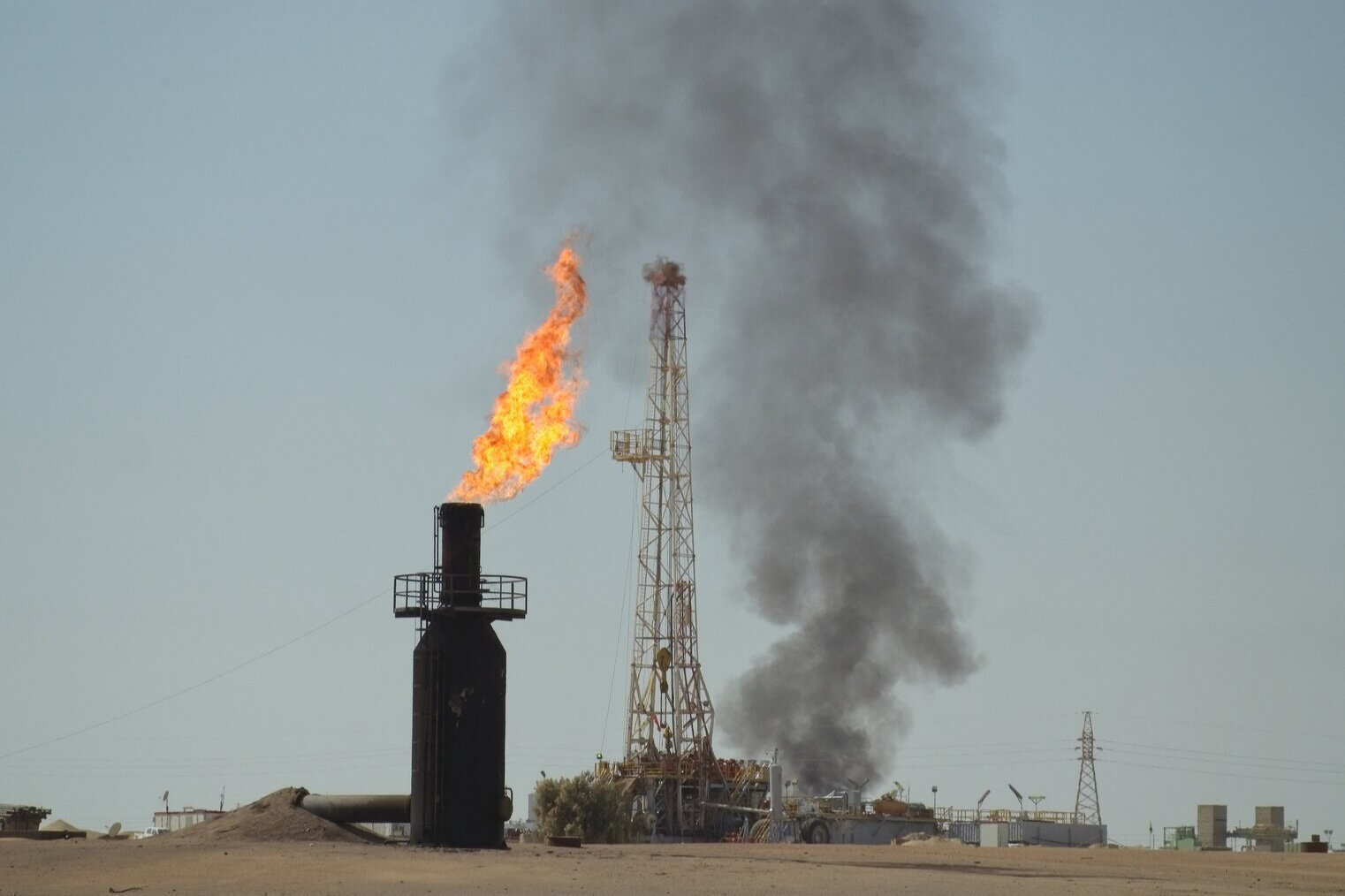
oil & gas industry.
LIBYAN OIL & GAS INDUSTRY
The oil industry comprises over 95% of export revenues and 60% of Libya’s GDP. The combination of these oil revenues and the relatively small population have given Libya one of the highest nominal per capita GDP, in Africa1.
Libyan oil is of a very high quality, characterised by its low-sulphur content, and is known as "sweet crude oil" This extremely sought after oil is easy to refine into petroleum products, including moisturisers and cosmetics and therefore commands higher prices than low quality oil, and is more attractive to foreign investors2.
Previous to oil exploration, the Italian colonial government had, because of Libya’s desert conditions, instigated numerous drilling expeditions at various sites in search of water. These searches involved drilling very deep wells and it has been recorded that, as far back as 1915, these wells often contained natural gas. This was not of great interest at the time, as natural gas was not a prime commodity and was instead burnt off (flared) as a nuisance3.
The exploration for oil really began in 1951, when Libya became an independent kingdom under the rule of King Idris of Libya4. Idris and his government recognised the potential of hydrocarbon exploration and oversaw the growing emergence of the Libyan oil industry, which provided much needed economic growth to a country which had suffered greatly through the preceding years.
Crude Oil
In 1953, aware of the growing interest from international companies, the Libyan Government passed ‘The Mineral Law’, which established a system for foreign companies to obtain permits to survey (but not drill) for petroleum5. This was then followed by ‘Petroleum Law No.25 of 1955’, which established a concessionary framework which authorised the allocation of permits or concessions for the drilling of oil wells to prospectors. Under this new law, companies from approximately forty countries were granted concessions to explore and drill in an area of about 600,000km2. Libya granted multiple concessions to international oil companies (IOC’s) including Esso, Mobil, Texas Gulf, and others. Under these concessions, the IOC’s were granted full control over all aspects of oil production6.
The IOC’s exploration of oil began in 1956, when the first wildcat oil field was drilled in the Sirte basin, followed in 1959 by Esso’s discovery of the first major oil fields at Amal and Zelten. A further four oilfields were brought in in the same year, with Esso and Oasis being the leaders in the field7.
Crude Oil
In 1960, Esso built its own 110 mile pipeline and the first export terminal at Marsa Brega, bringing in the oil from its Zeltan field. The Marsa Brega terminal opened on the 25th October in 1961, with the first shipment destined for the United Kingdom. This was followed by the opening of the Sarir Refinery by Bunker Hunt. By 1961, it was reported that Libya was exporting over seven million barrels of oil per day8.
1962 saw the opening by the Oasis Group, a consortium consisting of American companies Amerada, Continental and Marathon, of the pipeline and second oil terminal at Sidra. A subsidiary of Mobil and Amosea opened the third terminal in 1964 east of Sidra. British Petroleum also built a terminal in the east of Libya, near the Mediterannean city of Tobruk, but problems with the field led to delays and the first export by British Petroleum was not until 19679.
In 1966, Occidental Petroleum gained a concession, mainly through a bid that involved giving 5% of its profits to a Libyan agricultural project. By 1967, the company had opened three oilfields and by 1968, after the development of a 120 mile pipeline, Occidental had commenced exporting oil from their own terminal at Zueitina, on the east coast of the Gulf of Sirte10.
Mammoet-tanker Esso Libya gedoopt op de werf van Verol me, 23 augustus 1962, Koch, Eric / Anefo, Nationaal Archief. Eric Koch / Anefo, CC0, via Wikimedia Commons.
As part of Gaddafi's new vision for the country, the National Oil Corporation (NOC) was established on 12 November 1970. The NOC, which is still in existence, is responsible for most aspects of Libya’s oil and gas industry, including contract negotiations, development and investment.
In July 1970, under threat of nationalisation, IOC’s were forced by the NOC to agree to a 55% royalties payment. In 1972, Libya became the 51% majority shareholder in all concessions, and the concessions and production facilities of companies not agreeing with the new rules, such as British Petroleum, were nationalized12.
The first ‘Exploration and Production Sharing Agreement’ regime (EPSA1) was introduced by the NOC during the period between 1974 and 1978, with further model agreements being issued in 1979, 1988 and, lastly, the EPSA4 in 200513. These EPSA’s were issued to encourage new investors. This was particularly so with the EPSA4, as oil prices were high, and the excellent quality of Libyan oil made it an attractive investment. This allowed the NOC to demand that the IOC accept lower profit sharing and forced them to pay large signature bonuses. The EPSA4 also gave the NOC greater power by replacing the IOC’s Libyan partners. This move allowed the NOC to become a major decision maker in all aspects of the industry14.
Libya Oil Fields NordNordWest, Yug, CC BY-SA
https://commons.wikimedia.org/wiki/File:Libya_location_map-oil_%26_gas_2011-en.svg
In the mid 1970s, in an attempt to secure employment for its own citizens, the NOC introduced a program to increase recruitment of Libyan nationals into the oil and gas industry. The program was called “Libyanization” and IOC’s were asked to train and employ Libyans in the oil sector. Libyanization was not always welcomed by the IOCs due to costly training programs, and its uptake was slow 15.
Further refineries were opened under Gadaffi’s rule, firstly in 1974, when the Al Zawiya Refinery in Tripoli, was opened by the NOC, and later in 1984 the Ras Lanuf Refinery in the Sirte basin, which was opened by Rasco, a subcontractor of the NOC.
Prior to the 2011 revolution that toppled Muammar Gaddafi, Libya was producing roughly 1.6 million barrels a day, exported mostly to France, Italy, Germany, and Spain. Natural gas and oil revenues made up nearly 96% of government revenue, propping up a vast public sector and providing millions of Libyans with their main source of income16.
Sidra Oil Fields
Libya’s ‘Dawn Spring’ revolution in 2011, saw Gaddafi’s regime brought to an end. However, in the ensuing civil instability, the output of oil plummeted. The growing political divide which followed and conflict between the new coalition government which followed led to the closing of oil fields, ports and terminals, bringing the oil industry and the economy of Libya to its knees17.
Factional grievances over the distribution of oil revenues led to protests, and the closing down of oil fields, pipelines and loading ports18.
Libyan oil revenue fell dramatically again in 2014, as security risks associated with the civil war and lack of a stable government led to an international decline in investment and purchase of Libyan oil.
However, by 2017, Libyan oil production had reached a five-year high, driving moderate economic growth, with daily production rising to 879,000 barrels per day, with a projected future forecast of 1.6 million barrels per day19. However, the forecasted production may yet be impeded by rival factions continuing to clash near oil terminals and major cities.
For example, oil revenues reached $2 billion in August 2019, only to fall to $90 million in August 2020. The NOC has stated that the decline in revenue is due to the closure of oil wells and terminals, by militia groups. September 2020 saw the reopening of certain key wells, creating a surge of 600,000 barrels per day20. As such, it is likely Libyan oil production will continue to fluctuate until the civil war is brought to an end21.
ENI Platform Bouri DP4, 11 May 2008, Cipiota, CC BY-SA 3.0 via Wikimedia Commons
FOOTNOTES.
USD 12,062 as of 2010 (IMF estimate); rank 48 worldwide, followed by Equatorial Guinea with USD 11,081 on rank 51.
Temehu.com. “Oil & Natural Gas.” Libyan Oil & Natural Gas: (النفط الليبي والغاز الطبيعي). Accessed January 19, 2021. https://www.temehu.com/oil-gas.htm.
The History of the Development of Libyan Gas and Oil Resources. Accessed January 19, 2021. https://www.sjsu.edu/faculty/watkins/libyanoil.htm.
ibid.
ibid.
Karbal, Mohamed. “Libyan Oil Contracts: Negotiating The Future Generation Of EPSA - Energy and Natural Resources - Libya.” Welcome to Mondaq. Karbal & Co, July 21, 2020.
The History of the Development of Libyan Gas and Oil Resources. Accessed January 19, 2021. https://www.sjsu.edu/faculty/watkins/libyanoil.htm.
ibid.
ibid.
ibid.
ibid.
hg.org. Accessed January 19, 2021. https://www.hg.org/legal-articles/libyan-oil-contracts-negotiating-the-future-generation-of-epsa-41228.
ibid.
ibid.
ibid.
Haddad, Mohammed, and Paul Adrian Raymond. “The Battle for Libya's Oil.” Infographic News | Al Jazeera. Al Jazeera, February 19, 2015. https://www.aljazeera.com/news/2015/2/19/the-battle-for-libyas-oil.
ibid.
ibid.
Libya Economy Profile. Accessed January 19, 2021. https://www.indexmundi.com/libya/economy_profile.html.
Daily Sabah. “Oil-Dependent Libya Loses 95% of Revenue Due to Haftar's Blockade.” Daily Sabah. Daily Sabah, September 24, 2020. https://www.dailysabah.com/business/energy/oil-dependent-libya-loses-95-of-revenue-due-to-haftars-blockade.
“Libya's Biggest Oil Field Reopens, Adding to OPEC's Challenges.” World Oil - Upstream News. Accessed January 19, 2021. https://www.worldoil.com/news/2020/10/12/libya-s-biggest-oil-field-reopens-adding-to-opec-s-challenges.







